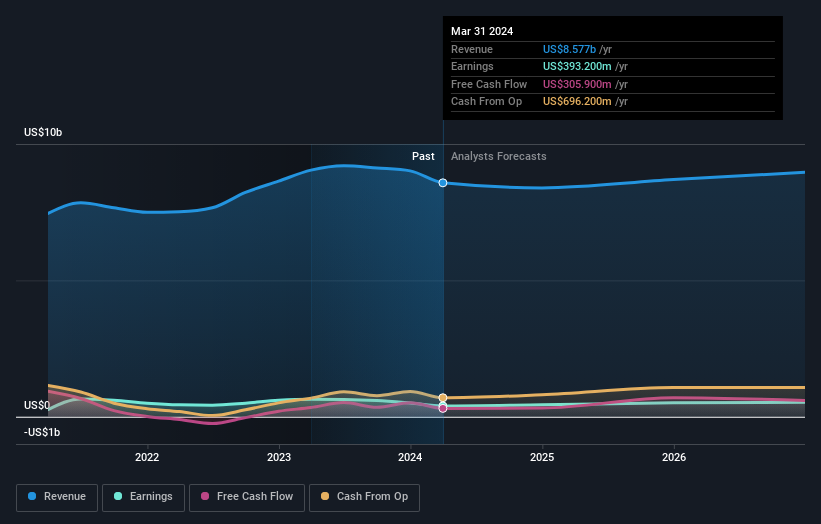Polaris Inc. Just Missed EPS By 30%: Here's What Analysts Think Will Happen Next
Last week, you might have seen that Polaris Inc. (NYSE:PII) released its first-quarter result to the market. The early response was not positive, with shares down 3.8% to US$83.28 in the past week. It looks like a pretty bad result, all things considered. Although revenues of US$1.7b were in line with analyst predictions, statutory earnings fell badly short, missing estimates by 30% to hit US$0.07 per share. The analysts typically update their forecasts at each earnings report, and we can judge from their estimates whether their view of the company has changed or if there are any new concerns to be aware of. We've gathered the most recent statutory forecasts to see whether the analysts have changed their earnings models, following these results.
View our latest analysis for Polaris
Taking into account the latest results, the current consensus, from the 19 analysts covering Polaris, is for revenues of US$8.39b in 2024. This implies a small 2.2% reduction in Polaris' revenue over the past 12 months. Per-share earnings are expected to increase 8.9% to US$7.58. In the lead-up to this report, the analysts had been modelling revenues of US$8.40b and earnings per share (EPS) of US$7.68 in 2024. So it's pretty clear that, although the analysts have updated their estimates, there's been no major change in expectations for the business following the latest results.
It will come as no surprise then, to learn that the consensus price target is largely unchanged at US$101. The consensus price target is just an average of individual analyst targets, so - it could be handy to see how wide the range of underlying estimates is. Currently, the most bullish analyst values Polaris at US$145 per share, while the most bearish prices it at US$75.00. This is a fairly broad spread of estimates, suggesting that analysts are forecasting a wide range of possible outcomes for the business.
One way to get more context on these forecasts is to look at how they compare to both past performance, and how other companies in the same industry are performing. These estimates imply that revenue is expected to slow, with a forecast annualised decline of 2.9% by the end of 2024. This indicates a significant reduction from annual growth of 7.7% over the last five years. Compare this with our data, which suggests that other companies in the same industry are, in aggregate, expected to see their revenue grow 2.9% per year. It's pretty clear that Polaris' revenues are expected to perform substantially worse than the wider industry.
The Bottom Line
The most obvious conclusion is that there's been no major change in the business' prospects in recent times, with the analysts holding their earnings forecasts steady, in line with previous estimates. Fortunately, the analysts also reconfirmed their revenue estimates, suggesting that it's tracking in line with expectations. Although our data does suggest that Polaris' revenue is expected to perform worse than the wider industry. The consensus price target held steady at US$101, with the latest estimates not enough to have an impact on their price targets.
With that in mind, we wouldn't be too quick to come to a conclusion on Polaris. Long-term earnings power is much more important than next year's profits. We have forecasts for Polaris going out to 2026, and you can see them free on our platform here.
Don't forget that there may still be risks. For instance, we've identified 2 warning signs for Polaris that you should be aware of.
Have feedback on this article? Concerned about the content? Get in touch with us directly. Alternatively, email editorial-team (at) simplywallst.com.
This article by Simply Wall St is general in nature. We provide commentary based on historical data and analyst forecasts only using an unbiased methodology and our articles are not intended to be financial advice. It does not constitute a recommendation to buy or sell any stock, and does not take account of your objectives, or your financial situation. We aim to bring you long-term focused analysis driven by fundamental data. Note that our analysis may not factor in the latest price-sensitive company announcements or qualitative material. Simply Wall St has no position in any stocks mentioned.

 Yahoo Finance
Yahoo Finance 
